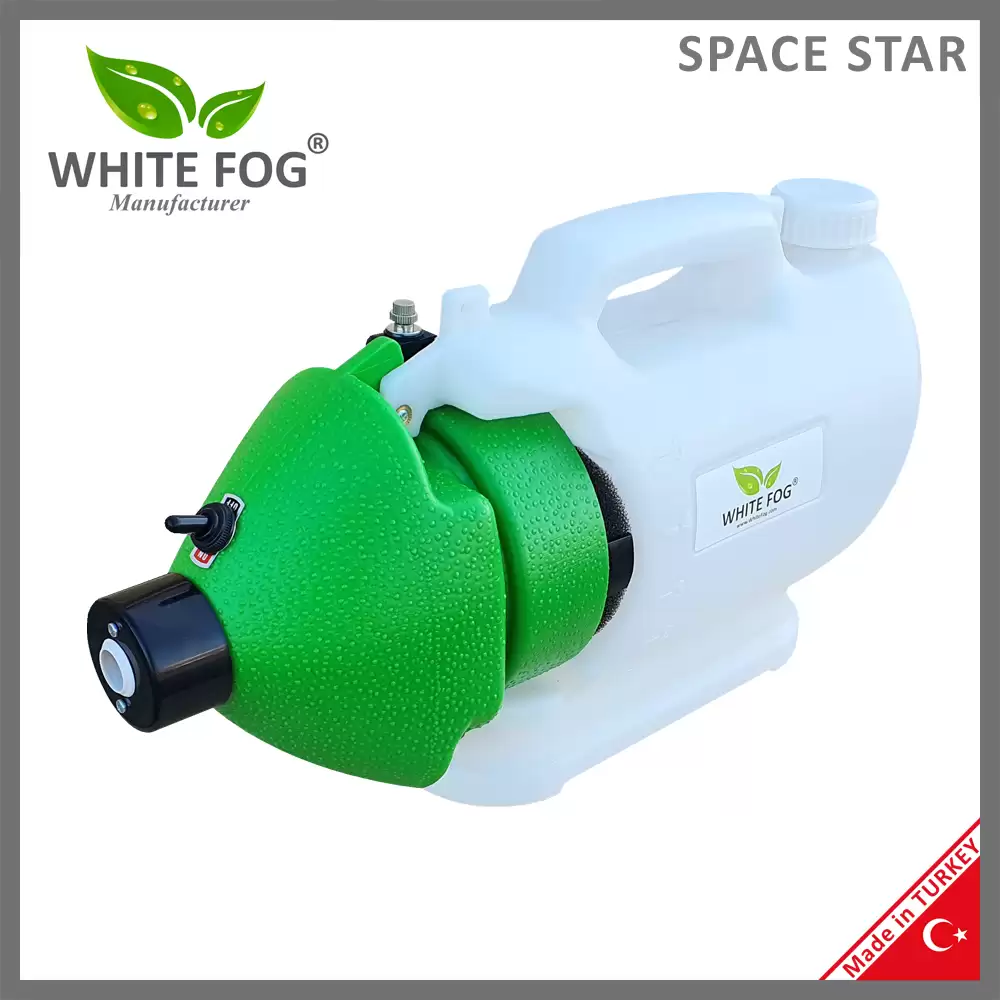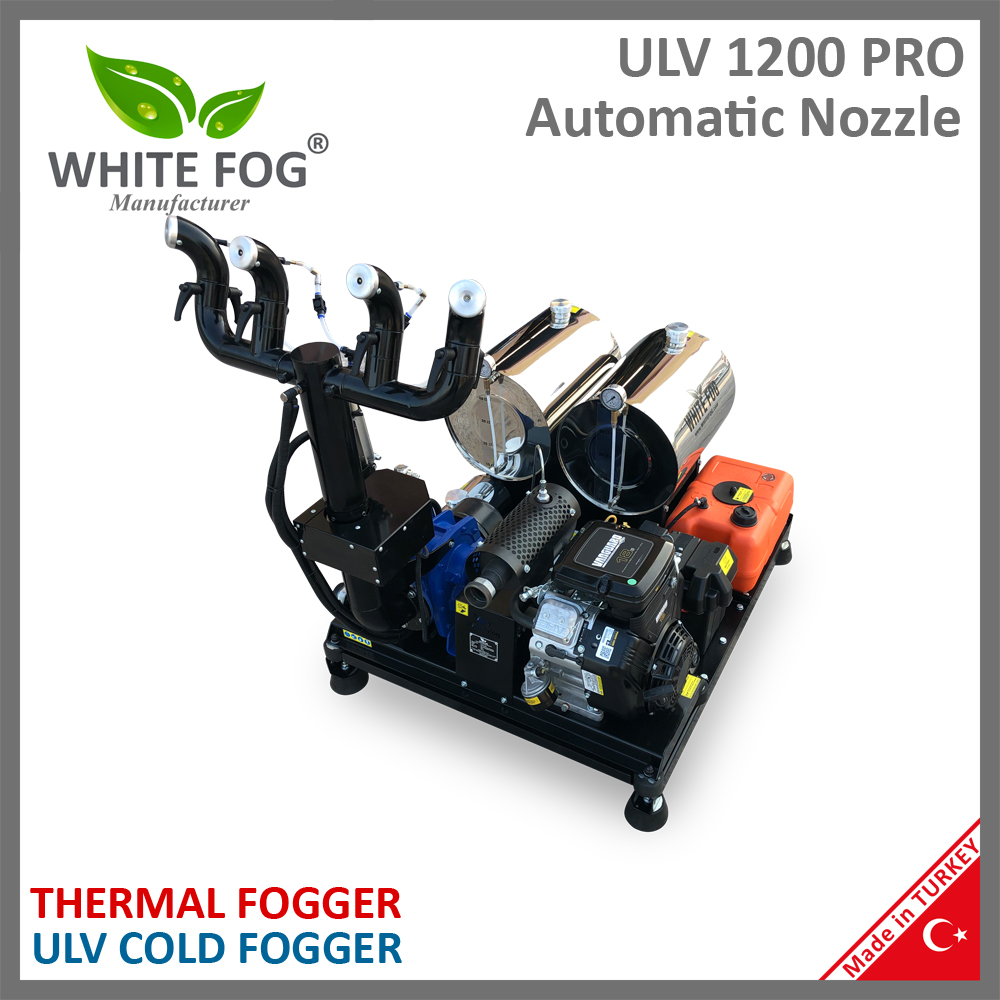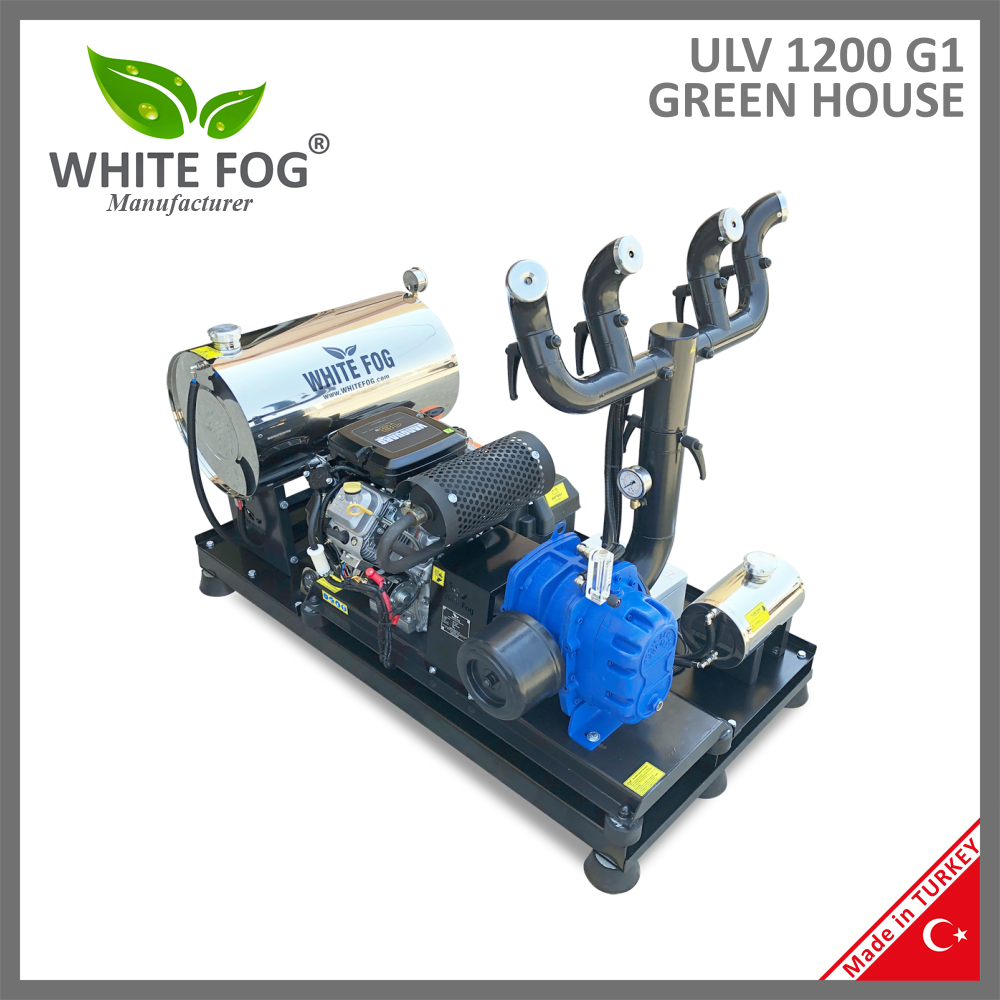Vehicle Mounted ULV Cold Fogging Machine ULV 1200 is the most popular and most preferred vehicle mounted ULV Fogging machine worldwide. It is used for pest and vector control purposes. The machine is highly preferred since it is produced from quality materials and complies with the criteria of the Dünya Sağlık Örgütü. Additionally, the life cycle of our ULV 1200 device is longer than 10 years. With the insecticide fogger treatment, it is used to take bug populations like mosquitos and houseflies under control, which carry contagious diseases like dengue fever, malaria and Chikungunya. We designed the vehicle mounted ULV cold fogging machine ULV 1200 device problem-free. The periodic pest control activity does not get interrupted with technical problems i.e. damaged remote control. You can operate the machine in 3 different modes. Through 1. Remote Control, 2. Switch button on the motor or 3. Pulling Cord. If the user forgets to switch off the button on the motor after usage, and the battery is exhausted, and you are unable to start the machine automatically from the controller, you can start the device using the pulling cord. What is more, the battery can charge itself again within 20 minutes.
If the vehicle mounted ULV Cold fogging machine ULV1200 device is not sufficient for you and if you are looking for a more professional device please see our Thermal Fogger and Cold Fogging Machine – ULV1200 Professional model.
Properties of the Vehicle Mounted ULV Cold Fogging Machine – ULV 1200
Cold Fogger:
It is used for fighting against mosquitos. The micron size ranges between 0-30µm. Thanks to the water-based cold fogging property it performs transparent mist application. The sprayed droplet diameters are small as in thermal fogging devices. On the other hand, it does not endanger the traffic like the thermal fogging machine. It is because it sprays a transparent mist. Additionally, since vehicle mounted ULV cold fogging machines are water-based, it has an economic application cost. The formulation tank is filled with water and insecticide formulation.
ULV Fogger:
It is used for fighting against houseflies. The micron size ranges between 30-50µm. It performs mist application with its water-based ULV Fogger property. The sprayed particles are larger than the Cold Fogger application. Killing bigger sized bugs than mosquitos i.e. houseflies requires larger micron diameters. Vehicle mounted ULV cold fogging machines of WhiteFog ® brand possess the Cold Fogger property as well as the ULV Fogger property.
Mist Sprayer:
It is used for acarid and grasshopper applications. The micron size ranges between 50-100µm. The ULV 1200 device can perform spraying with an average of 70 micron diameter with Mist Sprayer specification. All nozzles are 45 degrees adjustable can move to the right, left, up, and down. With the residual scanning method, it is capable to spray a 7-meter-wide road or a park exposed to an acarid attack. Mist sprayer is used for pest control purposes for the elimination of bugs of large size like larva, acarid, cockroach.
ULV Cold Fogging Spraying Gun (Optional Specification):
It 5-meter-long flexible house ULV Cold Fogging Spraying Gun is capable to perform 0-30µm or 30-50µm spraying. The user can perform two kind of spraying activity: ULV fogger or Cold Fogger. This is a practical property for dumpster and sewer spraying.
Vector Control is A Vital Component of Public Health for Disease Prevention
Vector-borne diseases pose a significant threat to global public health, resulting in millions of infections and deaths each year. The control of disease-carrying vectors plays a crucial role in minimizing the spread of these ailments. By employing effective pest control measures, such as cold foggers, and Ultra-Low Volume (ULV) equipment, public health authorities can mitigate the transmission of vector-borne diseases.
Below you can find some of the statistics and facts of Dünya Sağlık Örgütü regarding the importance of the combat against vectors.
The Global Burden of Vector-Borne Diseases
Vector-borne diseases, including malaria, dengue fever, Zika virus, chikungunya, and various forms of encephalitis, collectively affect millions of people worldwide. According to the WHO, vector-borne diseases account for more than 17% of all infectious diseases, resulting in over 700,000 deaths annually. These statistics demonstrate the urgent need for effective vector control strategies to safeguard public health.
Vector Control Methods
- Thermal Foggers: Thermal foggers utilize heat to generate a dense fog composed of insecticides or larvicides. The fine particles produced by thermal foggers disperse evenly in the air, reaching inaccessible areas where disease vectors may hide. This method is particularly effective in controlling mosquitoes and other flying insects. Research conducted by the WHO has shown that thermal fogging can significantly reduce mosquito populations, resulting in a decline in malaria cases by up to 90% in some areas (WHO, 2018).
- Cold Foggers: Cold foggers, also known as ultra-low volume (ULV) sprayers, produce a fine mist of insecticides or larvicides without using heat. This method is suitable for controlling vectors in both outdoor and indoor environments. A study published in the Journal of Medical Entomology found that cold fogging with a ULV sprayer effectively reduced the abundance of Aedes aegypti mosquitoes, which transmit dengue fever and Zika virus, by 70% in urban areas (WHO, 2020).
Significance of Vector Control
Disease Prevention: Vector control measures serve as a critical line of defense against vector-borne diseases. By targeting the vectors themselves, these interventions disrupt the transmission cycle and prevent the spread of infections. The WHO estimates that effective vector control measures have the potential to prevent over one million deaths annually (WHO, 2019). Such strategies play a pivotal role in reducing the burden of diseases and improving public health outcomes.
Cost-Effectiveness: Investing in vector control measures proves to be cost-effective in the long run. The WHO estimates that for every dollar invested in vector control, there is a potential return of up to $40 due to reduced healthcare costs and increased productivity (WHO, 2017). By utilizing thermal foggers, cold foggers, and ULV equipment, public health authorities can achieve maximum impact with limited resources.
Conclusion:
Vector control serves as an indispensable component of public health strategies aimed at combating the transmission of vector-borne diseases. The statistics provided by the World Health Organization underscore the importance of implementing effective pest control measures. Thermal foggers, cold foggers, and ULV equipment have demonstrated their efficacy in reducing disease vectors, thereby contributing to disease prevention efforts. By prioritizing and investing in vector control programs, governments, health organizations, and communities can protect populations from the devastating impact of vector-borne diseases and create a healthier future for all.
References:
- World Health Organization. (2017). Vector-borne diseases. Retrieved from https://www.who.int/news-room/fact-sheets/detail/vector-borne-diseases
- World Health Organization. (2018). Malaria: Key facts. Retrieved from https://www.who.int/news-room/fact-sheets/detail/malaria
- World Health Organization. (2019). Vector-borne diseases. Retrieved from https://www.who.int/westernpacific/health-topics/vector-borne-diseases
- World Health Organization. (2020). Dengue and severe dengue. Retrieved from https://www.who.int/news-room/fact-sheets/detail/dengue-and-severe-dengue





 ULV1200_Automatic_Nozzle_Catalog.pdf
ULV1200_Automatic_Nozzle_Catalog.pdf
































İncelemeler
Henüz inceleme yapılmadı.